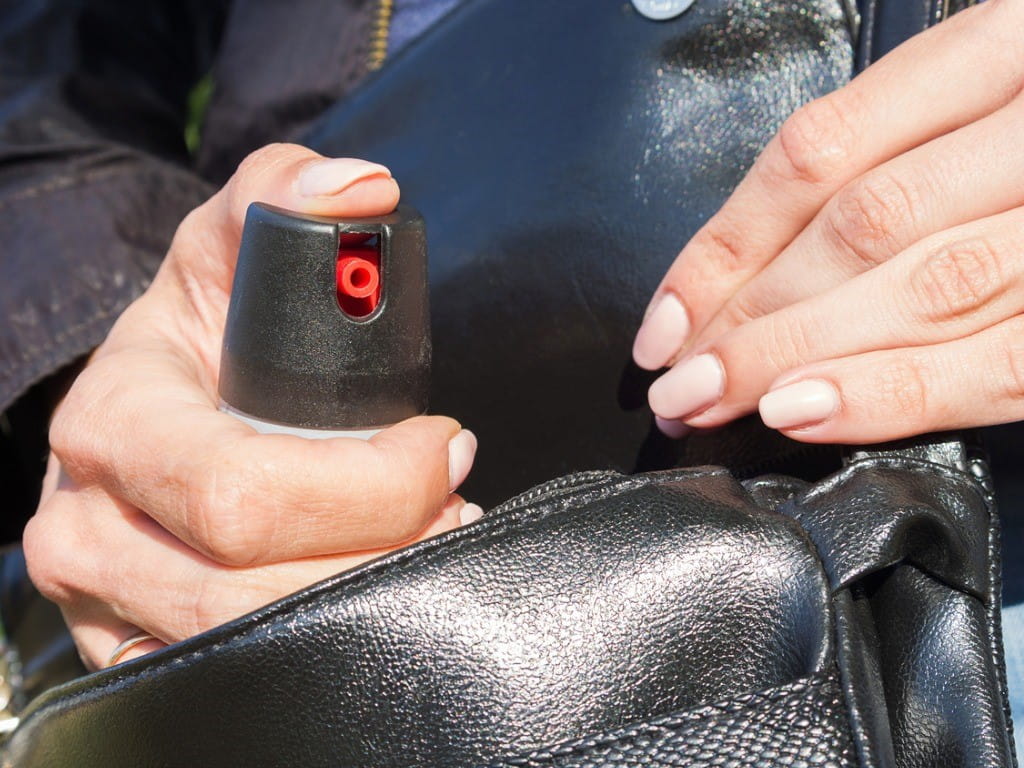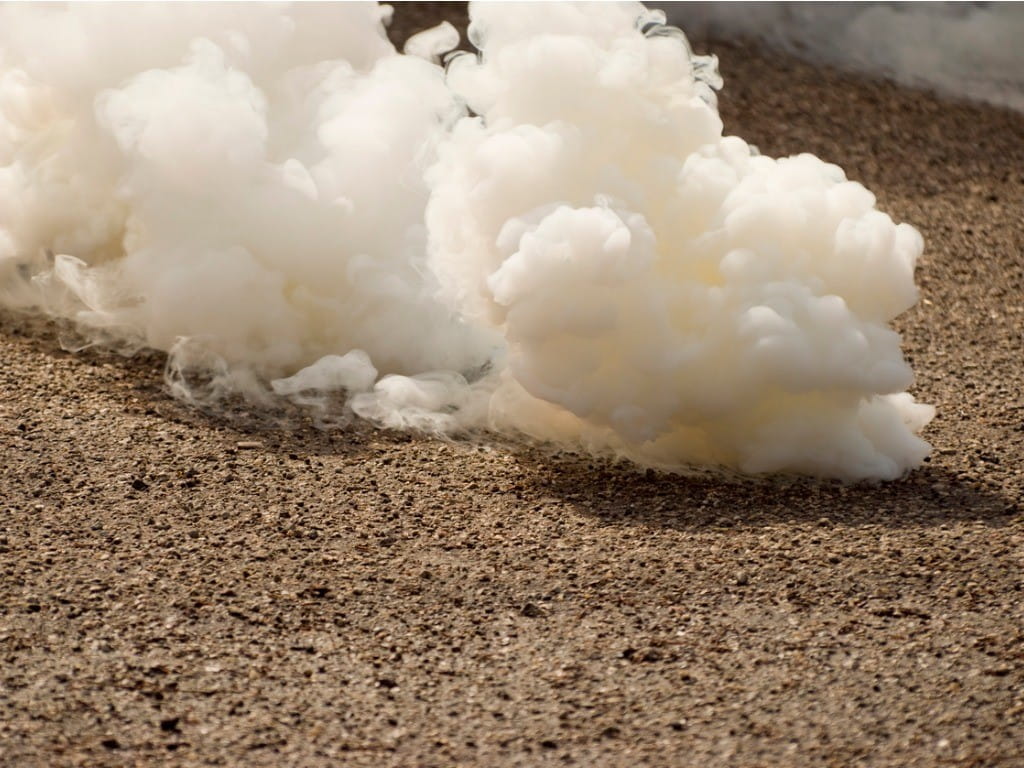How Dangerous is Pepper Spray?

The Bottom Line
Lacrimators are chemicals that cause tear production and are typically used for personal protection and crowd control. These chemicals cause intense irritation to the eyes, skin, and lungs and can temporarily incapacitate a person. The most common lacrimator is pepper spray.

What is pepper spray made of?
A lacrimator is a substance that causes tear production. The term also refers to a group of nonlethal chemicals used to temporarily disable without killing by causing intense irritation of the eyes, skin, and lungs. One of the most commonly used lacrimators is pepper spray. The main ingredient in pepper spray is capsaicin, which is found in edible peppers such as jalapeños. If you have cut up a jalapeño and then touched your nose or eye, you are very familiar with the irritating properties of capsaicin! It is also used in topical products to treat minor pain.Pepper spray vs. Mace: what’s the difference?
Mace is a name commonly applied to any lacrimator product, but it is actually a brand name for a series of personal protection products. Original Mace contained the lacrimator chloroacetophenone, but many Mace products now contain capsaicin. Mace (the lacrimator) should not be confused with the herb mace related to nutmeg, nor the medieval weapon also called a mace.How does pepper spray work?
Pepper spray is typically dispersed into the air as a stream of liquid or as an aerosol of small particles. Pepper spray products come in many sizes, including hand-held containers intended to be sprayed at a single person or animal (such as bear spray), as well as canisters that can be thrown or shot into an area, such as those used by law enforcement.What happens if you inhale pepper spray?
Pepper spray causes irritation of the eyes, skin, and mucus membranes. Inhalation exposures can cause coughing, difficulty breathing, nasal and throat irritation, and a runny nose. Eye exposures can result in pain, redness, watery eyes, difficulty opening the eyes, and sensitivity to light. Skin exposures can cause pain, redness, swelling, and itching.How long do the effects of pepper spray last?
The effects of pepper spray usually last 20–30 minutes but occasionally for several hours, especially if contaminated clothes have not been removed. However, more persistent injury is possible, including corneal abrasions, wheezing, and skin blisters. People with lung conditions, such as asthma or COPD, can have more severe breathing effects when pepper spray is inhaled.How to protect yourself from pepper spray
The Centers for Disease Control and Prevention (CDC) has published recommendations for how to protect yourself and what to do if exposed to tear gas like pepper spray. These include leaving the area where the tear gas was released and getting to fresh air. Emergency coordinators might advise people to evacuate an area or "shelter in place" inside a building to avoid being exposed to the chemical. If the spray was used indoors, open doors and windows to air out the area right away.What to do if you are exposed to pepper spray
While many treatments have been investigated for reducing the discomfort caused by pepper spray, the only consistent finding is that time away from the exposure is the most important factor. However, there are some common-sense things you can do to limit further contamination:
- If exposed, remove your clothing and rapidly wash your entire body with large amounts of soap and water.
- Clothing that would usually be pulled over the head should be cut off from the body instead.
- Eyes should be irrigated for 10–15 minutes with room-temperature water.
- Contact lenses should be removed and discarded. Eyeglasses should be removed and washed with soap and water.
- Jewelry should be removed and washed with soap and water or discarded.
- Contaminated clothing should be placed in a plastic bag. Avoid touching contaminated clothing by using rubber gloves, tongs, or sticks to place the clothing in the bag. The bag should be sealed and placed inside another plastic bag. The CDC recommends that you then contact your local health department for instructions on the appropriate disposal of the bagged clothing in your area.
Nasal irritation and a runny nose should improve after nasal irrigation with a saline solution. Throat irritation should improve after drinking cool fluids. A cough or minor respiratory irritation can improve with a steam treatment, such as a steamy shower. Anyone with serious effects such as wheezing, difficulty breathing, chest pain, or persistent eye pain should seek an immediate medical evaluation.
If you suspect someone has been exposed to pepper spray or tear gas, have them get fresh air immediately, start decontamination procedures, and then check the webPOISONCONTROL online tool for further guidance or call Poison Control at 1-800-222-1222.
Karen D. Dominguez, PharmD
Certified Specialist in Poison Information
Revised William G. Troutman, PharmD
Professor of Pharmacy Emeritus
Poison Control Media Information
Did you find this page helpful? If so, we need your support. Poison Control is in constant competition with misinformation online. Links to www.poison.org or our webPOISONCONTROL triage tool from other websites and blogs help internet searchers quickly find accurate information and Poison Control’s contact information in an emergency. If you use the content from this page, please provide attribution via a link back to this page, www.poison.org, or https://triage.webpoisoncontrol.org/#!/exclusions. By doing so, you could save a life. Thank you!
Poisoned?
Call 1-800-222-1222 or
Prevention Tips
- Lacrimators should be used as directed by the manufacturer.
- Keep lacrimators out of the sight and reach of children.
- If a lacrimator unintentionally gets on your hands, avoid touching your face and wash your hands thoroughly.
- If in an area where a lacrimator has been used, leave the area immediately and get to fresh air.
- Avoid direct contact with a pet (or any animal) that has been sprayed.
This Really Happened
Case 1. A mother called Poison Control because her 8-year-old son unintentionally sprayed himself in the face with pepper spray. He was wearing glasses at the time, which limited the amount he got in his eyes. His skin was red and irritated, but he felt better after washing with soap and water. Although he was not complaining of eye irritation, Poison Control gave instructions for irrigating his eyes should it become necessary. During a follow-up call, the mother said the boy's eyes were a little pink but not painful, his skin was red but without blisters, and his voice was a little hoarse. These effects were expected to resolve.
Case 2. A woman bought a can of pepper spray and wanted to try it out, so she sprayed it into the sink in her bathroom. She immediately developed throat irritation, coughing, and a burning sensation in her lungs, so she called Poison Control. She was advised to get some fresh air, drink water, and take a steamy shower. A follow-up call was made later that day, and she was feeling better.
For More Information
Facts about riot control agents interim document. US Centers for Disease Control and Prevention. Reviewed April 4, 2018. Accessed July 11, 2024.References
Poisoned?
Call 1-800-222-1222 or
Prevention Tips
- Lacrimators should be used as directed by the manufacturer.
- Keep lacrimators out of the sight and reach of children.
- If a lacrimator unintentionally gets on your hands, avoid touching your face and wash your hands thoroughly.
- If in an area where a lacrimator has been used, leave the area immediately and get to fresh air.
- Avoid direct contact with a pet (or any animal) that has been sprayed.
This Really Happened
Case 1. A mother called Poison Control because her 8-year-old son unintentionally sprayed himself in the face with pepper spray. He was wearing glasses at the time, which limited the amount he got in his eyes. His skin was red and irritated, but he felt better after washing with soap and water. Although he was not complaining of eye irritation, Poison Control gave instructions for irrigating his eyes should it become necessary. During a follow-up call, the mother said the boy's eyes were a little pink but not painful, his skin was red but without blisters, and his voice was a little hoarse. These effects were expected to resolve.
Case 2. A woman bought a can of pepper spray and wanted to try it out, so she sprayed it into the sink in her bathroom. She immediately developed throat irritation, coughing, and a burning sensation in her lungs, so she called Poison Control. She was advised to get some fresh air, drink water, and take a steamy shower. A follow-up call was made later that day, and she was feeling better.
